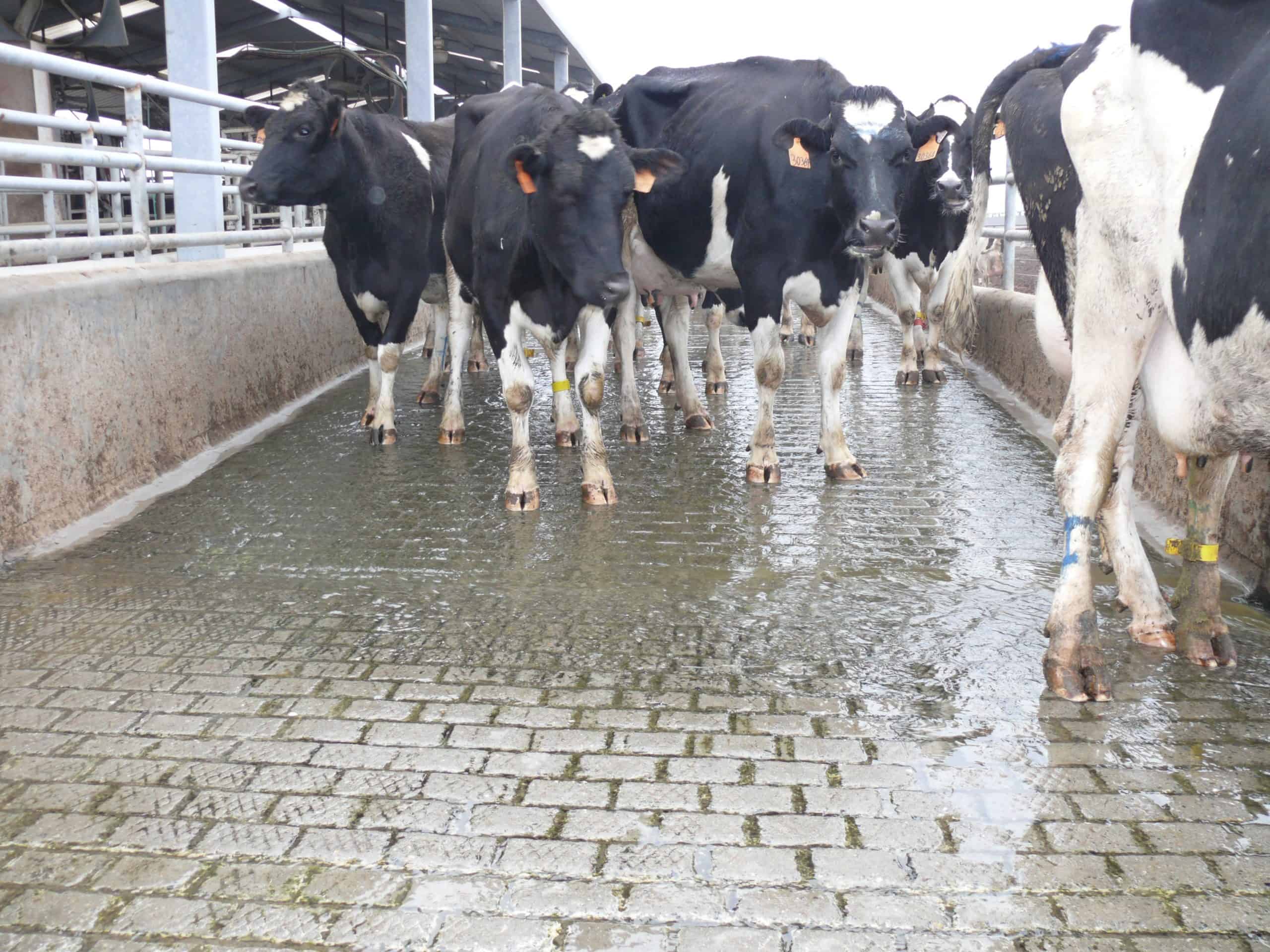
The last few years have been trying for everyone in the dairy industry, and dairy farmers are no exception to that. As a hoof trimmer of 18 years, I have been on hundreds of dairy farms worldwide and continue to be amazed by the levels of digital dermatitis (DD) I still see when visiting farms.
In the early part of 2020, I received a phone call from a new farm in the Midwest. They were calling because their hairy wart problem had gotten worse in the past few months leading up to their call. I asked the typical questions: How often are you trimming? Do you have a footbath on the farm? Are you using the footbath and how often? What are you using in the footbath?
They were trimming twice per year, though they were not doing interval trimming in the optimal time frame. For the footbath, they had a very well-designed bath and were running it three times per week using dry copper sulfate. We talked a bit more and set up a time for me to come out and investigate what was going on with his herd.
Upon arrival, everything the dairy producer claimed was true. They had a very nice footbath and a very nice herd of cattle in a well-designed, comfortable barn. I looked at the suspect cows, and they had DD and needed a better-scheduled maintenance program in place. Next, we went to his footbath to see what was going on. He was running dry copper sulfate but wasn’t running it at the proper percentage or frequency to have the desired results. Therefore, a lot of time and money was being wasted, as well as missing out on a lot of production. In fact, they were running about half as much as I would recommend to control DD and only half as frequently as well.
I told him I would finish trimming the ones that needed to be trimmed and wanted to show him how to get his herd down to zero warts with the copper sulfate product he was using.
The new protocol doubled the amount of product and increased frequency to seven days a week. The producer pushed back on what the cost would be to run the bath at full strength. I explained that dry copper sulfate is a great product, but it needs to run at proper strength and frequency, especially with the weather conditions of the Midwest. I assured him that if he followed the protocol, warts would get wiped out and he would see the benefits. He agreed to run the protocol and agreed that I would follow up in about a month, revisiting the farm and the protocol.
Upon my return one month later, the producer happily stated, “You’re going to notice that our hairy warts have pretty well dried up, and the cows are doing amazing.” The extra cost of the footbath was minimal compared to the increase in performance they experienced from the cows. Now that he knew what a herd free from DD could be like, the next step I proposed was to switch the product to one that was lower cows and could be used less frequently (back to three times per week). He was hesitant at first and certainly did not want to do anything that would jeopardize his cows going back to having DD in the barn again.
However, with trust in the process, the results spoke for themselves. With the barn free of DD, a lot of the factors contributing to the success of a dairy had increased, like the milk production, conception rate, and the lowering of cull rate, which also gave the dairy more power to choose which cows to cull in order to retain some of the better genetics and improve overall herd quality.
I have started working with and helping other hoof professionals with footbath management, as they are truly the ones who know the hoof situation on each dairy they service and often have the resources to help but are overlooked or not consulted with. Many of us, as professional trimmers, are dedicated to taking care of cows and helping them reach their full potential. We can achieve this by working with producers to put a proper maintenance trimming and footbath schedule in place. This means there are fewer lame cows and fewer cows that need wraps and other treatments to correct problems we would rather be part of solving on the front end.
I think we can all agree that, in the end, we owe the cows the best care possible, and that is paid back with positive results.
No two dairy farm operations are alike. But working with the people who know your cows’ feet the best to help put protocols in place can lead to the solution that has your herd free from DD and performing at their best.
Article originally appeared in Progressive Dairy- https://www.progressivedairy.com/topics/herd-health/how-one-dairy-herd-recovered-from-a-hairy-wart-problem?fbclid=IwAR1sjiDEdFMSplyB79HGyBi1i4xC93ZWXwOrcn2tZ6uhsiW3k3o-EhCsEG8